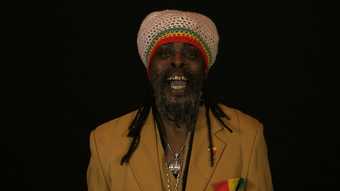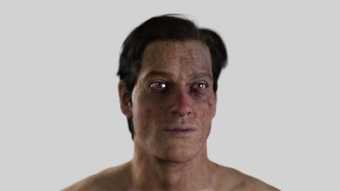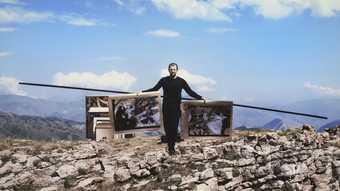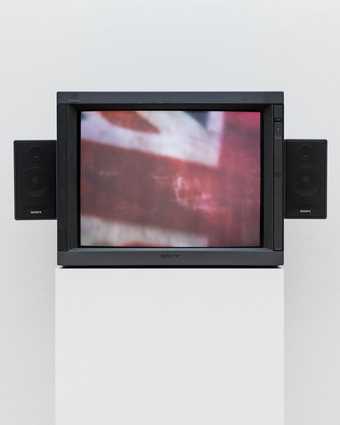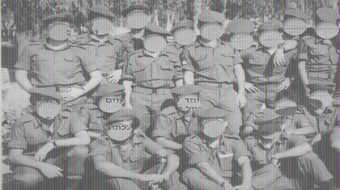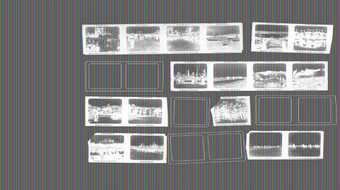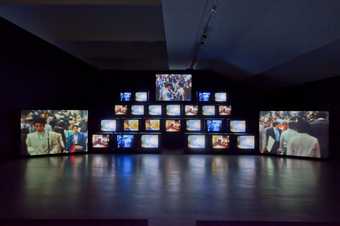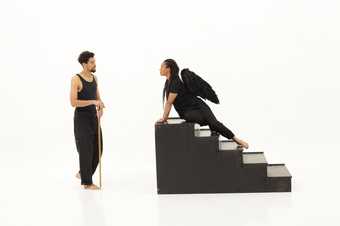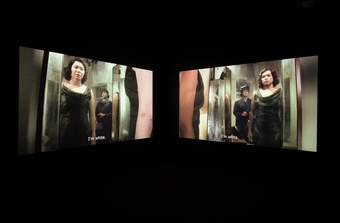Not on display
- Artist
- Vernon Ah Kee born 1967
- Medium
- Video, 4 projections, colour and sound (stereo)
- Dimensions
- Duration: 11min, 7sec
- Collection
- Tate
- Acquisition
- Tate and the Museum of Contemporary Art Australia, with support from the Qantas Foundation 2015, purchased 2016
- Reference
- T15514
Summary
tall man 2010 is a four-channel video installation with sound, originally exhibited at Milani Gallery, Brisbane as part of the artist’s exhibition tall man in 2011. It is eleven minutes and eleven seconds long and can be shown on a loop. It exists in an edition of three, of which this copy is number three. The work is concerned with the Palm Island riots of 2004. Palm Island is an Aboriginal community located on the tropical Great Palm Island, near northern Queensland, Australia. In November 2004 a young Aboriginal man, Mulrunji Doomadgee (also known as Cameron Doomadgee), died in in custody one hour after being detained by police. A week later, on 26 November 2004 at the public reading of the results of his autopsy, a riot ensued in which the police station, local courthouse and police barracks were burnt down and police officers and staff were forced to barricade themselves into the local hospital. It was later found, in 2006, that Doomadgee had died as a result of punches to the stomach; however, the Senior Sergeant was found not guilty of manslaughter in 2007. In 2008 two-time local Palm Island Councillor Lex Wotton was convicted and tried of inciting the riots. He served twenty months of a seven-year sentence. There continues to be widespread opposition to his sentence and the recent ‘gag order’ issued by the High Court of Australia.
Ah Kee’s exhibition and the video installation tall man are an homage to Lex Wotton, specifically to the ongoing repercussions and events that unfolded on 26 November 2004. With footage sourced from mobile phones, handheld cameras and television news reels, the work shows the events that took place on that day. The video begins with each of the four screens showing different gatherings of the community. A woman speaks of Doomadgee’s death: ‘our young fella who died tragically… It is a mystery to all of us. There was an accident around the cell. There was a fall and an oppressive force on his body. Four ribs were broken. A huge blood loss occurred.’ Following this, Les Wotton enters the screen shouting ‘That’s not an accident … C’mon people we all wanted this. We wanted to know. Will we accept this as an accident?’
The different screens of the video installation show the police station on fire and aerial views of Palm Island. The work incorporates the perspective of the police officers by showing them preparing for the riot and being forced to leave the police station and move to the barracks. Each screen includes the date and time ticking over in real time. Ah Kee uses the television test pattern, otherwise known as the SMPTE colour bars, to fragment the continuity of the footage and thus heighten the visual and emotional impact of the sequencing between screens. The test pattern is accompanied by the sound of a high-pitched video signal.
tall man is characteristic of Ah Kee’s artistic approach in its investigation into race relations in Australia. The artist has written:
While tall man is an idea of Lex Wotton’s involvement in the riot, it is also about the people of Palm Island and the circumstances in which they live their lives. It is about the lives of Aboriginal people and the way we see ourselves in times of this kind of trouble. As a people, the Aborigine in Australia exists in a world where our place is always prescribed for us and we are always in jeopardy. It is a context that we are continually having to survive. It is a context upon which we are continually having to build and re-build.
(Vernon Ah Kee, unpublished artist’s statement, November 2010.)
Ah Kee is a member of the Kuku Yalandji, Waanji, Yidinji and Gugu Yimithirr peoples and a founding member of the Aboriginal artist collective Proppa Now. His work ranges from large-scale drawings of his family members and ancestors to text-based works and installations incorporating moving image. It fuses the history and language of colonisation with contemporary issues in an ongoing investigation of race and politics.
Further reading
Robert Leonard, Anthony Gardner, Aileen Moreton-Robinson and otheres, borninthiskin: Vernon Ah Kee, exhibition catalogue, Institute of Modern Art, Brisbane 2009.
Maura Reilly, ‘Vernon Ah Kee, Tall Man’, Art Asia Pacific, no.73, 2011, p.136.
Natasha Bullock, Museum of Contemporary Art, Sydney
December 2015
Does this text contain inaccurate information or language that you feel we should improve or change? We would like to hear from you.
Display caption
tall man reveals the ongoing effects of colonisation in contemporary Australia. The work depicts events from November 2004 on Palm Island, an island off the coast of Queensland. A local man, Mulrunji Doomadgee (also known as Cameron Doomadgee) died in police custody. Protests followed, and the police station, local courthouse and police barracks were burnt down. One of the central figures leading the protests was Lex Wotton, a member of the Palm Island Aboriginal Council. Ah Kee presents him as the ‘tall man’ – an Aboriginal term for a bogey man or spirit who elicits the truth from wrongdoers. Wotton later won a lawsuit, alongside other Palm Island residents, which found that the police had illegally discriminated against them.
Gallery label, August 2021
Does this text contain inaccurate information or language that you feel we should improve or change? We would like to hear from you.
You might like
-
Graham Fagen The Slave’s Lament
2015 -
Ed Atkins Hisser
2015 -
Nira Pereg ABRAHAM ABRAHAM SARAH SARAH
2012 -
Taus Makhacheva Tightrope
2015 -
Peter Kennedy, John Hughes On Sacred Land
1983–4 -
Dor Guez The Sick Man of Europe: The Painter
2015 -
Dor Guez The Sick Man of Europe: The Architect
2016 -
Dor Guez The Sick Man of Europe: The Composer
2017 -
Moshekwa Langa Where Do I Begin
2001 -
Gretchen Bender Total Recall
1987 -
Grada Kilomba Illusions Vol. I, Narcissus and Echo
2017 -
Grada Kilomba Illusions Vol. II, Oedipus
2018 -
Buhlebezwe Siwani Amahubo
2018 -
Grada Kilomba Illusions Vol. III, Antigone
2019 -
Ming Wong Life of Imitation
2009


